News magazines:
'I see a whale'
by Tony Quinn
'When I see a whale hanging about in a lagoon getting fatter and fatter my immediate reaction is to reach for my harpoon.'
So said Felix Dennis. He was talking about What Car?, but it seems that the Economist was the whale of choice in late 2006. Lining up to have a pop at the venerable title by taking away the attention of its affluent readers were whalers in the form of:
- the BBC and a mooted news weekly called Newsbrief;
- Rupert Murdoch's News Magazines division in the UK with a possible news weekly, Spectrum, in development;
- Monocle monthly from Wallpaper founder Tyler Brûlé;
- Condé Nast in the US with monthly Portfolio;
- Condé Nast in Germany with a weekly Vanity Fair; and
- Andrew Neil with weekly-broadsheet-turned-magazine The Business – and when that failed Spectator Business.
Sections in this case study:
- Andrew Neil's Business
- Tyler's eye
- Condé Nast's Portfolio, Vanity Fair and Business
- The BBC's Newsbrief
- Murdoch's shadow
- What does history have to say?
- Is the Economist vulnerable?
- Table: Sales at the end of 2006
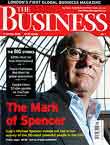 The Business calls itself 'London's first global business magazine' |
Andrew Neil's BusinessFirst out of harbour was Andrew Neil with The Business magazine – as 'Britain's first weekly international business magazine' in autumn 2006. This was a relaunch of the Sunday Business broadsheet paper in a standard magazine format and was published on Wednesdays.Neil had spent 10 year on the Economist where he became UK editor, before becoming editor of tthe Sunday Times for Rupert Murdoch, so should understand its market. He also turned the European newspaper into a magazine-style tabloid but plans to become a magazine foundered. Neil told the Telegraph (also owned by the Barclay brothers): 'New York has Business Week, Forbes, Fortune, Barron's. London doesn't have a business magazine.' The Economist 'is not a business magazine. It's a geo-political magazine and it's great at that. Business is a few pages at the back.' The magazine was a relaunch of Sunday Business, which was founded by Tom Rubython as a national broadsheet in 1996 to compete with the Financial Times (which does not publish on a Sunday). Initial sales were claimed of 150,000, but just 60,000 by the fourth issue (Media Week, 17 May 1996, p1) and several staff left. Sales carried on falling and in in 1997 the title was bought by David and Frederick Barclay, who owned The European (and later bought The Daily Telegraph and The Scotsman). The Barclays relaunched in February 1998 with Andrew Neil as publisher and Jeff Randall as editor.This boosted the paper but, after a loss of staff, in 2003 Neil handed over its production to the Press Association and then came up with the magazine concept.The Independent (16 October 2006) saw Neil as a Captain Ahab: 'The seminal episode in Andrew's life was being Britain Editor of the Economist. He has since dreamt of creating a rival. His attempt to change The European newspaper into a magazine was not a runaway success. Now he has persuaded his employers, the Barclay brothers, to let him do the same with The Business. As a (to my mind) quite creditable Sunday newspaper, it struggled at just over 20,000 copies. As a magazine it is supposed to sell 45,000. Captain Neil sees something we don't.' Eighteen months later, the Indie was proved right. Press Holdings announced the closure of The Business in February 2008, the day before new ABC sales figures were released. The Business had a previous sales figure of 41,843 – 9,764 newstrade sales and 7,269 subscriptions. Editor Allister Heath left to take over business freesheet City AM from David Parsley. Heath retained a position as associate editor of the Spectator. However, it also announced another chance for Neil with the launch of Spectator Business, which came out in the spring and was distributed to a selected readership. It became a standalone monthly in May 2008, but in April 2008 a drop in frequency to quarterly from July 2009 was announced. |
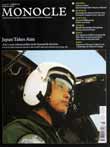 Monocle – monthly current affairs with a dash of style from Tyler Brûlé |
Tyler's eyeTyler Brûlé's monthly, Monocle, is aimed at affluent opinion formers with a mix of business, reportage, cultural criticism and luxury goods coverage. The core readers will be frequent travellers like Brûlé himself. Its 'hub' is in London but with bureaux in Tokyo, New York and Zurich. It is being sold worldwide. Brûlé raised £5m from private investors to pay for the launch. The first issue of 10-times-a-year Monocle was March 2007 at £5 a copy. It hopes to sell 150,000 copies.Brûlé told the Observer: 'We have been influenced by the success of the Economist and the BBC in North America … but we will be bringing stories to life with our writing and reportage and looking ahead a bit, which is very different from what the Economist does.' In the first issue, he admits to being a fan of Germany's news weeklies and picks out National Geographic, der Spiegel and Stern (for 'its bold photography, fondness for skin and racy subject matter') as inspiration. Brûlé feels magazines have a great future in the online era. He explained to Adage.com: 'It struck me that there was room to give people all over the world something which was more visual than what's on offer and more of a look ahead,' he said. 'Could there be an opportunity to do something which was much more luxurious in terms of production values, not necessarily just what was inside, and married the best of geopolitics and business?' 'If you look at Asia and markets like South Korea and Japan, which are four or five years ahead of us in this digital revolution, their publishers' reaction has been "Let's invest more in print".' Brûlé is editor-in-chief, with Robyn Holt from Condé Nast's Russian office as managing director. Wallpaper was one of the great success stories of the 1990s, but Brûlé's two later attempts, sports fashion title Line and fashion title Spruce, both failed. Press interviews: |
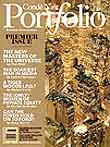 Portfolio joins Vogue and Vanity Fair as Condé Nast titles in newsagents in 2007; but it closed in 2009 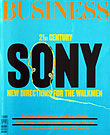 Business: a large-format glossy joint venture between Condé Nast and the Financial Times (1986-1991) |
Condé Nast's PortfolioNext to test the choppy waters was Condé Nast's Portfolio. This was a business monthly, with a launch issue on 24 April 2007 (May cover date). The company put a lot behind it, with the New York Times reporting that 'Executives said the company was willing to lose more than $100 million on it.' The monthly soon ran into the recession, however, reducing its frequency to 10 copies a year from October 2008; cutting back on the website's original content; and firing some staff. In April 2009, Portfolio's closure was announced. New York magazine ran a profile of Condé Nast chairman S.I. ('Si') Newhouse in which it described him as falling in love with his editors and Portfolio as his flawed baby:
A Portfolio.com website, with unique content and interactive tools, supported the launch. Although it may not seem obvious, the Vogue and GQ publisher does have a current affairs and business pedigree. It may be best known for its film star covers, but Vanity Fair counts 'politics and power' in its beat and regularly steps into the geopolitical arena. Issues have profiled the Bush administration, in a non-too-favourable light, and the June 1993 issue carried an excellent article on the succession battle at the Economist. The company also owns technology title Wired (which it launched in the UK in 2009). Portfolio was seen as entering a tough market in the US for business advertising with page volumes down at BusinessWeek, Forbes and Fortune at between 3% and 13% over 2006. Also, their sales figures have been flat in recent years. As for its UK business pedigree, Condé Nast had teamed up with the Financial Times in 1986 to launch Business, a glossy monthly. Although this lasted five years, it lost money and closed with the onset of recession in 1991. Kevin Kelly, who set up the magazine, described it as a spoiled child: 'It had two excessively rich parents and they didn't have the discipline of getting costs in line. They were paying rates to journalists that I was unhappy about. It was a Rolls-Royce read, but never an essential read.' After the closure, the Independent quoted Stephen Fay, the magazine's editor for the first three years:
When it closed, Business was 15,000 short of break-even of 60,000 and had lost £5m-£6m. Asked whether anyone would try again, Fay said: 'Not for a generation. A lot of fingers have been burnt.' Portfolio sounds like it might be in the Business mould. In a Financial Times feature in October 2006, Stephen Adler, editor-in-chief of BusinessWeek, shrugged off the threat: 'Portfolio is doing something entirely different, it will be a high-quality feature publication that feels more like Vanity Fair.' 'BusinessWeek defines itself as timely, concise and useful – I don't think that is how Portfolio would describe itself.' However, like all the titles covered here, they will be dipping into the same reader pool and the revenue from the same advertisers. And talking of Vanity Fair, its launch in Germany in February 2007 was as a very fat weekly (330 pages for just €1 with double covers and gatefolds galore) though the second issue settled down at just (!!) 198 pages. The production values set a standard that the likes of Monocle can only yet aim for. |
The BBC's 'Newsbrief'As for the BBC, little has been revealed about any plan for an international news magazine. A report in the Guardian said it would be a weekly with contents based aon its news programmes Newsnight and Panorama. 'Phoenix' is the codename given to the project, with a working title of Newsbrief. |
Murdoch's shadowMedia Week reported that News International had registered the title Spectrum in October 2006. It said Times insiders had indicated that a news analysis magazine would be an area of interest, drawing on the editorial resources of paper. However, the group's magazine division closed its interiors title Inside Out in January and postponed the proposed launch of a women's weekly when it won the contract (from another NI division, BSkyB) to publish Sky customer magazine, which had been run by John Brown Citrus. The division closed in 2008 and Love It! was sold to Bauer. |
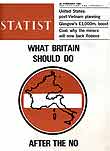 Statist - Economist lookalike dated back to 1878 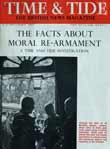 Time & Tide – 'the British news magazine' for 2-8 September 1965. 24 pages were devoted to the cover feature 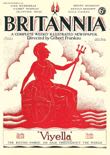 Britannia: magazine first issue cover from 1928. It carries articles by Mussolini, Arnold Bennett and Lord Birkenhead under editor Gilbert Frankau 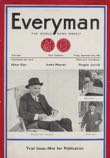 Everyman magazine pre-launch issue in 1933 with newspaper baron Beaverbrook on the cover 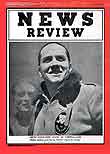 News Review: 'Britain's first weekly news magazine' in 1940 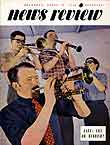 News Review asks 'Jazz: art or rubbish' in its 13 April 1950 issue 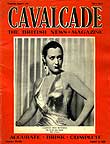 Cavalcade – 'The British News Magazine' with film actress Chili Boucher on the cover 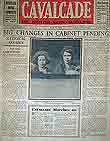 Cavalcade relaunched as a tabloid in 1938 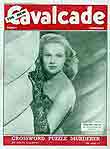 The New Cavalcade in 1949  Princess Margaret on the first issue of Topic (21 October 1961)  Topic – 'the British news weekly' second issue 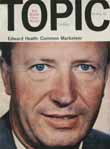 Topic – as relaunched by Cornmarket with a redesign by Tom Wolsey 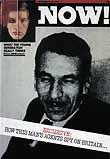 Now! news magazine launch issue, 14 September 1979  Now! in December 1980 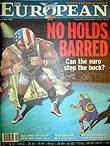 The European as a weekly tabloid magazine  Cover from The Week 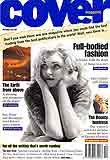 Cover magazine first issue with the main cover line: 'Full-bodied fashion: Is Sophie Dahl the shape of things to come?'. The editors were Robert Lacey and Danny Danziger  The Editor, a 24-page A4 supplement with the Guardian on Saturday: 'The best of the world's media edited for you.' This was a special issue on women's media 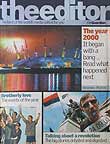 The Editor from 19 December 2000 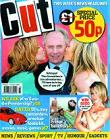 Cut magazine from Bauer |
What does history say?There have been many news weeklies in Britain in the past century:
Statist dated back to 1878. IPC relaunched The Statist in 1961 under Paul Bareau from the Economist as editor as a domestic rival to the Economist – complete with a similar look. By 1967, the editor-in-chief was Paul Bareau and editor Colin Jones, but it failed to reach its 200th anniversary and closed in 1967 with sales of 20,000-30,000 copies. Time & Tide was founded in 1920 by Viscountess Rhondda (a suffragette who survived the sinking of the RMS Lusitania by a German U-Boat in 1915) using the wealth from her coalmine-owning father Lord Rhondda. Her aim was to put 'the woman's point of view in what was then a man-ruled world'. She died in 1958 and the magazine's funds were exausted. It was a literary review in this period, but under the control of Rev Timothy Beaumont and editor John Thompson it became a political news-magazine competing with the Spectator and New Statesman in the early 1960s. The February 1961 cover was done by Ruari McLean and Jan Pienkowski became art editor in March until mid-1962. However, according to Topic (7 July 1962, p35), it was unable to raise its sales above 14,000 and it was sold. The new owners were led by William J. Brittain who took over in July 1962. At the end of the year it merged with John O'London's, regarded as the leading literary magazine before the second world war but whose fortunes had waned since. A regular editorial from 1965 described Viscountess Rhondda as 'leaving a magazine which, as the theatrical people say, was a great artistic but not a commercial success'. The Magazine Data File has Time & Tide becoming a monthly in 1970. By 1972, it branded itself 'The World News Magazine', with colour covers and newsprint inside. It became less frequent, with an advert in the Economist (19 May 1984, p103) describing it as 'A quarterly magazine about the major issues of our time.' That summer 1984 issue was able to attract notable writers, though: Margaret Thatcher, Gen Sir John Hackett, Lord Denning, Norman St John Stevas, David Owen, the Duke of Edinburgh, Gerald Kaufman, Chapman Pincher and Sir William Rees Mogg. Britannia – right-wing voice in 1928Gilbert Frankau, a poet and novelist who had started writing as an officer in the Great War for The Wipers Times, ‘directed’ this right-wing weekly, which covered politics, foreign affairs, technology, women’s fashion and sport. It did not last long, however, though the name continued on in a rather odd merger with the woman's monthly Eve to form Britannia and Eve from May 1929. The cover showed a spot-red silhouette of Britannia in a similar pose to that on a penny coin of the time. The frontispiece was a political cartoon by Brien, an Irish-born cartoonist. Inside was a half-page advert for Wright’s Coal Tar Soap in the form of a crossword – then still a new fad – competition to win a Morris Oxford car. The first spread was Frankau’s ‘Flare of the Torches’ column, with the phrase across the pages, shedding light on a topical issue.Among the articles was one by the Italian fascist Mussolini for Britannia, entitled 'My life'. The standfirst suggests Frankau was a supporter:
Everyman – 1933Everyman styled itself ‘The World News Weekly’ and was based on the relaunch of a weekly arts review founded in 1929. This also did not last long, being taken over by The Bookmark, a quarterly, in 1935. The cover shown here is for a dummy promotional issue to advertisers. The price is shown as the front and back of a 1933 penny. This is one of the rarest coins, because only seven were minted. Editor Francis Yeats-Brown said the issue was designed to hold 30,000 words and be read in an hour. Elinor Glyn was one of the most famous authors and screenwriters of the day, having coined the term ‘It girl’ to describe Hollywood actress Clara Bow. News Review and Cavalcade – 1936In February 1936, two news weeklies hit the news-stands: News Review and Cavalcade. An article in US news weekly Time ('British Newsmagazines', 24 Feb, 1936) covered the rivalry between the two. Cosmopolitan Press published the former from Fetter Lane in 'a grubby little building called Cosmopolitan House'. Time's reporter interviewed Tibor Korda, a 30-year-old Hungarian at News Review: 'Since Time . . . first made its appearance, the question has been asked frequently – who will produce a similar publication in England?' Then:
News Review was taken over by Odhams and based at 198 High Holborn. It lasted into the 1950s. Cavalcade called itself 'The British News-Magazine'. It was published by News Periodicals, 2 Salisbury Sq, Fleet St, London EC4 and printed by Sun Engraving, London & Watford on glossy paper. Cameron was initially editor with William James Brittain as publisher. Brittain was 'a rising Fleet Streeter who was once assistant editor of Lord Beaverbrook's blatant Sunday Express' and took over as editor within a year. (Someone of the same name edited Time & Tide from 1962 to 1972, with Juliet Brittain taking over). Cavalcade was almost A4 in size (8.5x11in) and typically ran to 48 pages. It regularly ran advertising pages promoting advertising itself:
Plane Advertising Ltd was a regularly advertiser, with pages promoting its biplanes flying over seaside resorts. The 7 August 1937 issue claimed an audited net sale of more than 50,000 copies a week with an advertising rate of £35 a page. A regular feature was a centre-spread map of the world with captions summarising international news. In March 1938, Cavalcade relaunched as a tabloid weekly paper on newsprint under the auspices of Illustrated Publications. Illustrated had relaunched it again by June 1949 as The New Cavalcade, but this only lasted until 1950. Launch of Topic in 1961The launch issue of Topic – 'the British news weekly' bore the cover date 21 October 1961. It ran to 64 pages with colour cover and centre spread, printed in photogravure by Martlet Press in London's Old Kent Road. The editor was Morley Richards, a Daily Express veteran, and the backing came from a clutch of millionaire industrialists. An article in Time magazine said the first issue sold 150,000 copies at 2/-; that it could break even with sales of 65,000 and show a profit at 90,000. However, as Time also pointed out:
An article in Topic's first issue called the venture 'Britain's biggest publishing gamble' since the second world war. 'Topic,' Time said, 'may discover that to make a go of it in Britain, even six millionaires are not enough.' The words of the doomsayer were prophetic. Despite a redesign and halving the cover price, Dome Press pulled out with issue 33 and the title was bought by Town publisher Cornmarket (Michael Heseltine and Clive Labovitch). Most of the Dome staff did not transfer. In came Nicholas Tomalin as editor; Richards became 'consulting editor' and carried on writing a column about Fleet Street and television; Michael Parkinson was deputy editor. Tom Wolsey redesigned the magazine and used photographs by people such as Don McCullin. However, the title collapsed in late 1962. Goldsmith has a go with Now!Seventeen years later, Sir James Goldsmith had a go with Now! as Cavenham Communications with Anthony Shrimsley as editor. Goldsmith controlled Generale Occidentale, a Paris-based holding company with interests in supermarkets (Liptons and Presto in the UK), oil drilling and forest products. He also owned the French news weekly L'Express (sales 585,000). He had tried to gain control of several Fleet Street newspapers to advance his right-leaning, pro-European political ideas. Goldsmith poured money into the title with expensive colour printing, which at first paid off with the Sunday Times Magazine off the streets at the time because of a strike. Like Topic, Now! started well, selling out of the print run of 416,000 copies. However, the sales target of 250,000 copies was not met and the first year figure of 182,000 slid to 119,000 in 1981. It folded in May 1981 after 84 issues. Goldsmith lost something like £7m in the venture. According to Time:
Maxwell's The EuropeanIt was a European agenda that sparked the next attempt, Robert Maxwell's The European (see European newspaper case study). He wanted the 'voice of Europe' to have its own platform. It appeared in May 1990 and the first audited sales figure was 226,000 – 74,000 short of the break-even target (about 150,000 were expected to be sold in Britain). The paper had a turbulent time after the corrupt owner's death in 1991 and ended up in the hands of the Barclays brothers being run by Andrew Neil. Sales in 1993 were estimated at about 200,000. In July 1997, Neil announced plans to turn The European into an upmarket magazine. The paper was to go tabloid and then become a colour magazine competing with the Economist, Wall Street Journal, International Herald Tribune and Financial Times. The first of the tabloid magazines appeared on 16 March 1998. However, six months later, the Barclay brothers announced its closure. The last issue was dated 14-20 December. Other news magazinesIn May 1995, The Week was launched by Jon Connell, a former deputy editor of the Sunday Telegraph, as a digest of the world's press. Its motto: 'All you need to know about everything that matters.' A year later, Maxim publisher Felix Dennis took a 51% stake in the title. It was selling about 4,000 copies at the time. By 2000, it was selling 52,367. In 2001, Dennis employed former Times and Sunday Times editor Harold Evans as a consulting editor and launched the Week in the US with a $17m budget, as a rival to Newsweek and Time. By the end of 2006, the Week was selling 134,803 copies in the UK and 358,336 in the US.Yet, this was not a new idea; it can be traced back at least to 1881. Tit-bits from George Newnes rewrote material from many sources, using cheap newsprint and selling in volume. This editorial model spawned many imitators. In the late 1980s, a contract publishing magazine (possibly for Rank Xerox) culled the best business articles from around the world. The success of the Week also led to imitators. Among them were a monthly, Cover, launched by Robert Lacey, author of Majesty, the 1977 biography of Queen Elizabeth II, and Sunday Times journalist Danny Danziger. Eight investors were reported to have shared the £1.1 million launch costs and 3i later added £500,000. Cover was an eclectic mix: 'Are there really people out there interested in everything from East European gun-dogs to Warren Beatty?' asked the Financial Times ('Second-hand browse', 8 September 1997, p23). However, other Fleet Street papers noted what was happening and stuck their oars in the water. The Editor was a 24-page A4 supplement with the Guardian every Saturday: 'The best of the world's media edited for you'. The Independent introduced Monitor, All The News of The World, as a page in its Saturday edition. Guardian editor Alan Rusbridger told the Times: 'The Week is such a parasitical form of journalism that the parasite cannot complain if a parasite lands on its back ('If a story is good, it's good enough to tell twice' by Brian MacArthur, Media section, p39). However, by mid-1999, Cover was in trouble and sought fresh funding; Lacey pulled out; and the title closed. A much later imitator, though with a different slant, was Cut. This was a weekly lad's magazines from Take A Break publisher H Bauer. The first issue, dated 12 August 2004, culled from 54 papers and 185 magazines. However, Cut closed in December. Other titles, weekly or monthly, fall into the current affairs category. These are listed in the news magazines table below with sales figures for the end of 2006. The Financial Times published a magazine supplement called The Business from 1999 to July 2002 with its UK Saturday edition. In 2003, it launched a new Saturday supplement, FT Magazine, under editor John Lloyd. It had a focus on international politics – particularly during the US invasion of Iraq – as part of a relaunch of the paper. The focus later softened with more consumer-related and lifestyle articles.Another rumoured development deserves a mention. This was the report in 2003 that the left-leaning Guardian was to launch a weekly political magazine in the US in time for the start of the 2004 presidential campaign. Guardian in America never appeared but the paper's website, and a weekly summary of the paper, are very popular in the US. However, the costs of a magazine launch in the US would be horrendous – especially at a time when newspapers face the peril of trying to establish an online publishing model. |
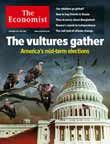 Economist – a November 2006 cover of the business news magazine |
Is the Economist vulnerable?With a circulation of 1.1 million copies, 80% of them in subscriptions, the Economist – which is half-owned by the FT (until 2015) – is certainly a whale of a magazine (or rather newspaper, as it calls itself). But just how much blubber is there? It certainly looks more bloated with its pages of contents introduced in a redesign – which also brought in more images and editorial colour – in 2001. That was under editor Bill Emmott, but this hardly looks extravagant when the circulation has risen 80% in a decade. John Micklethwait was appointed editor on 1 April 2006.The magazine built on its solid contents with a sharp design from 1957 under art editor Peter Dunbar. It established the white out of red box masthead – designed by noted engraver, designer and typographer Reynolds Stone – that the magazine sports to this day (though it now uses a different typeface). Although the treatment of the subsidiary cover lines has changed, the style of cover with a mix of photography, illustration and typography is as successful now as it was in the 1960s and the sales have grown from 85,000 in the mid-1960s. And its strategy of expanding into Europe, then the US and elsewhere has been an outstanding success. In 1978, relations between the FT and the Economist took a turn for the worse when the former set out plans for a weekly edition in the US, just as the Economist was starting a circulation drive there. The FT's World Business Weekly flopped however. It turned out US company managers did not want an international alternative to their local magazines. The FT retreated and passed on the 20,000-30,000 subscribers to the Economist. It is difficult to see any of the announced launches taking The Economist's crown. The likes of the Business might have an effect at the edges, but the Economist's reputation, bolstered by clever advertising over decades, saw off the usurper and the title is firmly established in the psyche of the business world. The Economist itself has identified competition from the expanding analysis in daily papers as a barrier to selling more copies in the UK: 'That became especially true in the 1960s and 1970s, when British daily papers started to carry more of the interpretive, argumentative and analytical articles that had traditionally been the preserve of the weeklies.' That is the route the FT has taken, reading increasingly like the Economist, often with more analysis than news on its pages these days. So efforts were focused on expanding sales overseas. Internationally, Monocle, Portfolio and Vanity Fair were fighting it out for high-end fashion advertising, which is not the Economists's patch. However, in September 2007 the Economist turned its annual Intelligent Life into a quarterly with the slogan 'Lifestyle. Now with substance.' It was edited by Ed Carr (a former FT news editor). The large format title is sold in the UK, continental Europe, the Middle East and Africa. The BBC seems the only realistic potential rival, though it may have political problems launching a commercial magazine with taxpayers' money – its magazine publishing division cannot possibly be throwing off enough cash to fund a news weekly – into a market that many would argue is already well served. Politically, the BBC is likely to be forced to look overseas for commercial growth, having become too big in the UK with its guaranteed income under the licence fee. |
2009: recession comethCome 2009, with recession established in most of the world economy, advertising revenues faltered and copy sales fell. As always, the weakest titles are the first to go. Conde Nast saw its ad pages fall off a cliff in the US and casualties swiftly followed:
The Times (15 May 2009) reckoned Monocle was selling 150,000 copies worldwide at £5, with 10,000 subscribers paying £75 a year. |
| Sales of news and current affairs magazines | ||||
| Title |
Publisher | Launch date | Sector | UK/world sales 2006 Jul-Dec* |
| Business | Condé Nast / Financial Times | 1986 | Business & finance monthly | closed 1991 |
| The Business | The Business Publishing Ltd (Press Holdings) | 1996 as broadsheet newspaper; 14 October 2006 as magazine | Business & finance weekly | closed February 2008. ABC of 41,843 (9,764 newstrade sales; 7,269 subscriptions) |
| BusinessWeek (US) | McGraw Hill | 1929 | Business & finance weekly | 930,722 |
| Cavalcade | News Periodicals | 1936-1950 | News weekly | 50,000 (publisher's statement in 1937) |
| Cover | Cover Publishing | 1997 | Monthly article compilation | closed 1999 |
| Der Spiegel | Gruner + Jahr | 1946 as Diese Woche (This Week) by British Control Commission for Germany; 1947 as Der Spiegel (The Mirror) | News weekly | 2,650 (worldwide: 1.06m) |
| Economist (total sales) | The Economist Newspaper Ltd | 1843 (UK) | Business & finance weekly | 1,088,790 |
| UK | 170,038 | |||
| The Americas | 544,395 | |||
| Continental Europe | 226,894 | |||
| Middle East / Africa | 25,862 | |||
| Encounter | Encounter Publishing (funded by the CIA until 1967) | 1953-1991 | Anti-communist Anglo-US monthly journal | closed (20,000 in 90 countries) |
| The European | Maxwell Communication Corporation | May 1990 | Weekly broadsheet newspaper / tabloid magazine | closed (226,000 max?) |
| Focus | Burda | 1993 (Germany) | News weekly | 714,168 |
| Monocle | Winkontent | March 2007 | Celebrity | 150,000 (2009 estimate) |
| New Statesman | New Statesman Ltd | 1913 | Domestic political weekly | 30,036 |
| News Review | Cosmopilitan Press / Odhams | 1936-195? | Weekly | n/a |
| Newsbrief (working title) | BBC | In development (mooted for April 2007) | News weekly | n/a |
| Newsweek | Washington Post | 1933 | News weekly | 158,142 (worldwide: 3.6m) |
| The Oldie | Oldie Publications Ltd | February 1992 | Domestic monthly | 24,769 |
| Portfolio (US) | Condé Nast | 24 April 2007 (May cover date) | Monthly | closed April 2009 |
| Private Eye | Pressdram Ltd | 1961 | Domestic fortnightly | 208,979 |
| Prospect | Prospect Publishing Ltd | October 1995 | Domestic monthly | 22,269 |
| Spectator | Spectator (1828) Ltd (Press Holdings) | 1928 | Domestic weekly | 72,034 |
| Spectator Business | Press Holdings | May 2008 | Business & finance monthly; quarterly in 2009 | n/a |
| Spectrum (registered title) | News International | In development | Domestic weekly | n/a |
| Statist | The Statist Co Ltd | 1878-1968? | News weekly | close (1976?) |
| Stern | Gruner + Jahr (Bertelsmann) | 1948 (Germany) | News weekly | 1m (worldwide) |
| Time | Time Warner | 1923 (US) | News weekly | 143,519 (worldwide: 5.2m) |
| Time & Tide | Time & Tide Ltd | 1921 – 1984? | Literary review / News weekly, then monthly, then quarterly | less than 14,000 |
| The Week | Dennis Publishing | 1995 | Domestic weekly | 134,803 |
| World Business Weekly | Financial Times | 1978 | International business affairs | 20,000-30,000 (closed) |
| Vanity Fair (Germany) | Condé Nast | 7 February 2007 | Culture weekly | closed February 2009 |
| *Sources: Audit Bureau of Circulations (www.abc.org.uk); publishers | ||||
| Back to top | ||||


